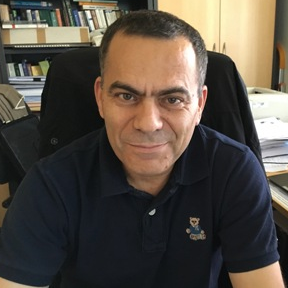Selected Papers from the 3rd Iberoamerican Symposium on Organic Chemistry (SIBEAQO-3)
A special issue of Molecules (ISSN 1420-3049). This special issue belongs to the section "Organic Chemistry".
Deadline for manuscript submissions: closed (30 November 2016) | Viewed by 19039
Special Issue Editor
Interests: organic chemistry; green synthetic organic chemistry; synthesis of heterocyclic compounds; natural products; NMR techniques; synthesis of new compounds with biocidal and antioxidant activities
Special Issues, Collections and Topics in MDPI journals
Special Issue Information
Dear Colleagues,
The 3rd Iberoamerican Symposium on Organic Chemistry (3º Simpósio Iberoamericano de Química Orgânica), (SIBEAQO-3), will be held at the Auditorium Professor Ferreira da Silva, Department of Computers Sciences, Faculty of Sciences, University of Porto (FCUP), from 23 to 26 September, 2016.
The main objective of this symposium is to create a scientific framework in the field of Organic Chemistry and related fields, to promote the exchange of ideas and experiences, collaboration and mobility among researchers from Latin America, Portugal and Spain. This meeting comes after two previous symposiums, the SIBEAQO-I, held in Mar del Plata (Argentina) in November 2007, attended by 150 participants, and SIBEAQO-II, held in Santiago de Compostela in September 2010, with 200 participants.
The SIBEAQO-3 scientific program includes excellent speakers, as nine plenary lectures, nine invited lectures, fourteen oral communications, and a high number of poster communications, are scheduled. For all details, please see http://www.iceta.up.pt/SIBEAQO3/conferencia_en.html, where the full list of speakers is available, including as plenary speakers, Dean Toste (Univ. California, Berkeley, USA), Luis Echegoyen (Univ. Texas, USA), Eusebio Juaristi (CINVESTAV-IPN, MEXICO), Jesús Jimenez Barbero (CIC bioGUNE, SPAIN), Ronaldo A. Pilli (UNICAMP, BRAZIL), João F. Mano (Univ. Minho, PORTUGAL), Augusto Costa Tomé (Univ. Aveiro, PORTUGAL), Carlos Afonso (Univ. Lisboa, PORTUGAL), and José Barluenga Mur (Univ. Oviedo, SPAIN).
Participants of the conference are cordially invited to contribute original research papers or reviews to this Special Issue of Molecules.
Prof. Dr. Artur Silva
Guest Editor
Manuscript Submission Information
Manuscripts should be submitted online at www.mdpi.com by registering and logging in to this website. Once you are registered, click here to go to the submission form. Manuscripts can be submitted until the deadline. All submissions that pass pre-check are peer-reviewed. Accepted papers will be published continuously in the journal (as soon as accepted) and will be listed together on the special issue website. Research articles, review articles as well as short communications are invited. For planned papers, a title and short abstract (about 100 words) can be sent to the Editorial Office for announcement on this website.
Submitted manuscripts should not have been published previously, nor be under consideration for publication elsewhere (except conference proceedings papers). All manuscripts are thoroughly refereed through a single-blind peer-review process. A guide for authors and other relevant information for submission of manuscripts is available on the Instructions for Authors page. Molecules is an international peer-reviewed open access semimonthly journal published by MDPI.
Please visit the Instructions for Authors page before submitting a manuscript. The Article Processing Charge (APC) for publication in this open access journal is 2700 CHF (Swiss Francs). Submitted papers should be well formatted and use good English. Authors may use MDPI's English editing service prior to publication or during author revisions.
Keywords
- chemistry organometallic
- organocatalysis
- synthesis
- supramolecular and biological chemistry
- nano and new materials
- natural and medical chemistry products
- green chemistry
- theoretical chemistry - applications
- chemistry in education and society






